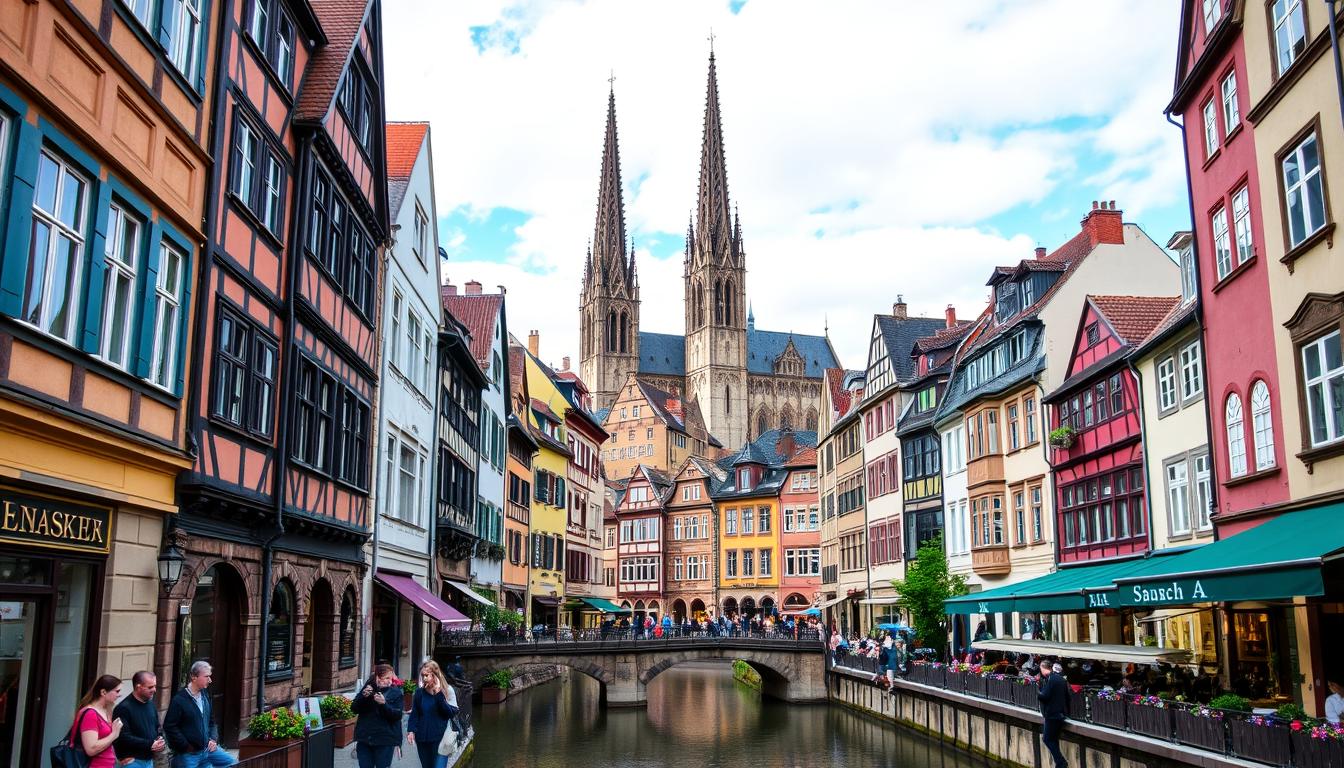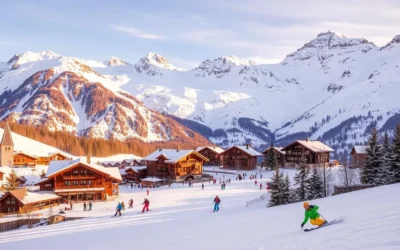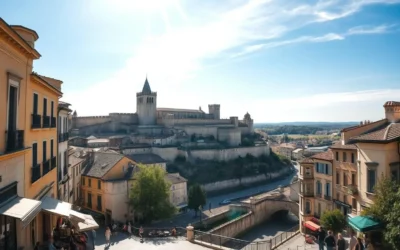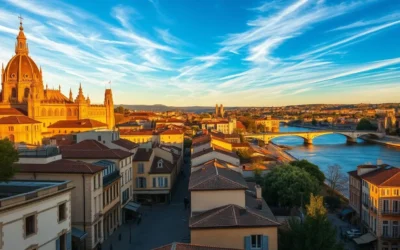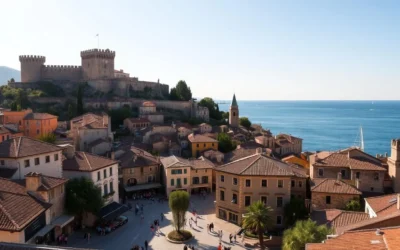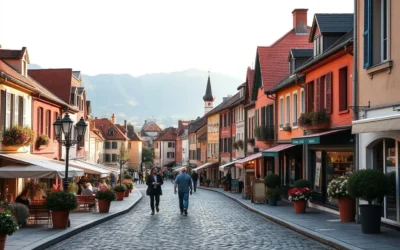Ready to discover a hidden gem in France? Strasbourg, the Alsace capital, blends French and German influences. This makes it a truly unique and captivating place. With its deep history, amazing buildings, and lively culture, Strasbourg is a top spot for any traveler.
What makes Strasbourg so special? Find out in our top 10 list of 10 Best Things to Do in Strasbourg, France. Explore the charm of La Petite France and the amazing Cathédrale Notre-Dame de Strasbourg with its iconic astronomical clock. The city’s historic sites and culture will make your visit unforgettable.
Key Takeaways
- Strasbourg is a UNESCO World Heritage Site with a unique blend of French and German architectural influences.
- The picturesque neighborhood of La Petite France offers a glimpse into the city’s medieval past, with its charming half-timbered buildings and quaint cobblestone streets.
- The iconic Cathédrale Notre-Dame de Strasbourg is a stunning example of Gothic and Romanesque design, featuring the renowned astronomical clock.
- Strasbourg serves as an excellent base for exploring the Alsace region, with easy access to nearby cities like Colmar and the Alsace Wine Route.
- The city’s conservation efforts, such as the protection of the beloved storks, showcase its commitment to preserving its cultural heritage.
Introduction to Strasbourg’s Allure
Strasbourg stands as the largest city in eastern France’s Grand Est. It’s known as one of the nation’s most hidden gems. This city, bordering Germany, features a mix of both French and German charms in its design, food, and history. Such a unique blend that UNESCO saw fit to give it World Heritage status, noting the clear division between the twisty paths of the French old town and the open streets of the German new area.
UNESCO World Heritage Site Status
Strasbourg has a special title from UNESCO highlighting its architecture and history. To be named a UNESCO World Heritage site is a big deal. It shows the world how important Strasbourg is culturally and historically as it connects Alsace’s region and French-German cultures.
Unique Architectural Blend
Looking at Strasbourg’s buildings is like flipping through a history book. The designs reflect both French and German styles. The mix creates a fascinating sight. As you walk, you’ll see the old town’s narrow pathways quickly change to the new city’s wide, elegant streets. All of it celebrates Strasbourg’s one-of-a-kind charm and its spot on the UNESCO list.
Exploring La Petite France
Go to the southwestern part of the island, and you’ll see La Petite France, Strasbourg’s historic district. It feels like you’ve traveled back in time. You’ll find charming medieval timbered buildings, decorated with old signage and flowers. The Ill River flows by, earning the area the nickname “Little Venice.” There are many places to eat, from light snacks to hearty local dishes.
Charming Medieval Ambiance
Walking through La Petite France was the best part of my visit. You can absorb the Alsace atmosphere on its cobblestone streets. These are lined with pretty half-timbered buildings.
Picturesque Half-Timbered Buildings
The medieval architecture in Strasbourg’s historic district is amazing. Its half-timbered buildings take you back in time.
Quaint Cobblestone Streets
Wandering the cobblestone streets of La Petite France is enchanting. You’ll feel the Alsace atmosphere all around this charming area.
Ponts Couverts: Iconic Covered Bridges
As you explore La Petite France in Strasbourg, you’ll see the famous Ponts Couverts. These are covered bridges over the Ill River. The bridges feature square towers and beautiful flowers.
The bridges have roofs, which is how they got their name. They were part of Strasbourg’s old defenses. Vauban, a famous French military engineer, designed them. Walking across, you can take amazing photos of the city.
The Strasbourg’s covered bridges are stunning. They look beautiful in the Ill River. These Ponts Couverts are a highlight for anyone visiting Strasbourg.
Barrage Vauban and Terrasse Panoramique
While in La Petite France, make sure to see the impressive Barrage Vauban. It’s been key in protecting Strasbourg for many years. This fortification, created by Vauban, has 13 arches. They used to help flood the area against enemies.
When you climb the Barrage Vauban, you reach the Terrasse Panoramique. From here, you can see the entire city. It’s a great place for photos, with views of Strasbourg’s famous Cathédrale Notre-Dame and the quaint La Petite France.
The Barrage Vauban and Terrasse Panoramique show Strasbourg’s intriguing history of defense. By exploring these sites, you’ll understand how important the city’s position was. Also, you’ll admire the smart French military engineering.
Strasbourg, France: Best Things to Do – Top Picks
Go to the east side of the island to see the breathtaking Cathédrale Notre-Dame de Strasbourg. It’s among France’s oldest, from the 13th century. This UNESCO World Heritage site mixes Gothic and Romanesque styles beautifully.
Known for its rich history, it was the tallest structure in the world for over two centuries.
Cathédrale Notre-Dame de Strasbourg
Step inside the awe-inspiring Cathédrale Notre-Dame de Strasbourg. You’ll meet the Horloge Astronomique, a Renaissance wonder. Every day at 12:30 pm, it puts on a show. You’ll see the Apostles move and the sun, moon, and stars appear.
Musée de l’Œuvre Notre-Dame
If you liked the Cathédrale Notre-Dame de Strasbourg, you must visit Musée de l’Œuvre Notre-Dame. It takes you deep into the cathedral’s history. It has fascinating collections that show Strasbourg’s significant past. The museum’s highlight is a virtual reality experience. It lets you see the cathedral tower’s top view in the afternoons.
Virtual Reality Experience
At the museum, a unique virtual reality show awaits. It takes you to the high points of Cathédrale Notre-Dame de Strasbourg. You get a special look at the city’s skyline. This experience makes the cathedral’s history vivid. You see a view that’s not open to everyone.
Romanesque Garden
Besides its rich history, Musée de l’Œuvre Notre-Dame has a Romanesque garden. It symbolizes paradise. Walking in this serene place feels like a break from the lively city. The garden is full of greenery and calm water. It refreshes your soul.
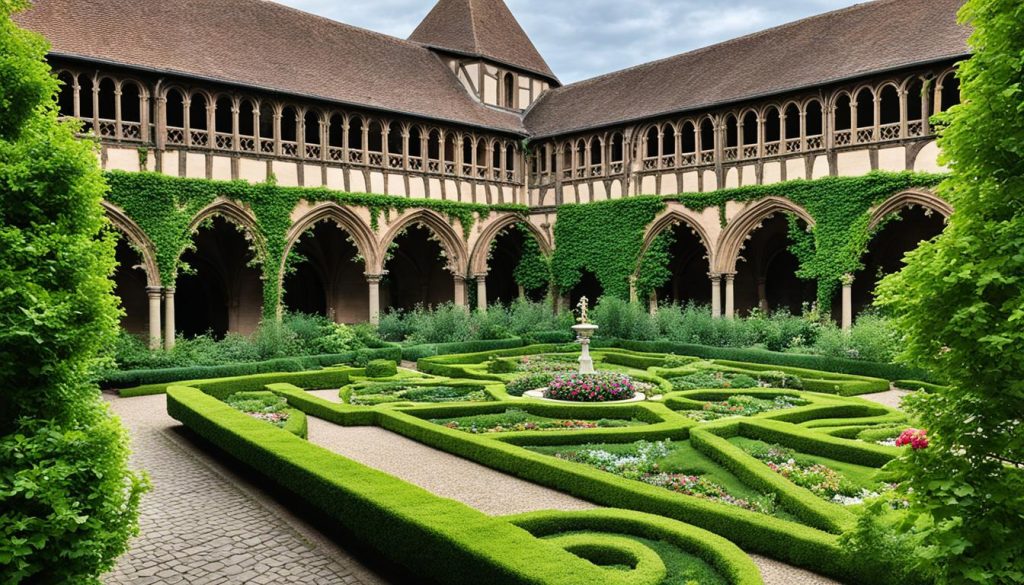
Musée Alsacien
The Musée Alsacien takes you back to rural life in Alsace centuries ago. It lets you learn a lot about Strasbourg, its history, and unique customs. You see why this city is so important to France.
Rural Alsatian Life Exhibitions
Walking through the museum’s buildings, you enter into the past. You explore different rooms and notice the houses’ unique designs. Original artifacts are displayed with explanations in multiple languages. Plus, the museum overlooks a river, offering a glimpse into traditional Alsatian culture and rural life.
Traditional Architecture
In the Musée Alsacien, you find yourself amazed by the traditional architecture. The famous half-timbered buildings typical of Alsace catch your eye. This experience helps you understand Strasbourg’s centuries-old heritage and style.
Parc de l’Orangerie
Stroll through Orangery Park and find peace in the city’s heart. It’s just a 30-minute walk from the busy center. This journey lets you explore beyond the crowded streets and enjoy the serene tranquil outdoor oasis. It’s a favorite place for local families to enjoy French picnics and people-watching.
Storks and Conservation Efforts
People in Strasbourg love their storks. The birds are more than the town’s mascot. They represent a local success story in Alsace. In the 1970s, storks faced extinction in the region. But thanks to the Center for Reintroduction of Storks, their numbers flourished.
In Strasbourg, you can see stork nests on many rooftops. These nests are big and found on chimneys or special platforms. They are a symbol of the city’s strength and its efforts to protect its nature.
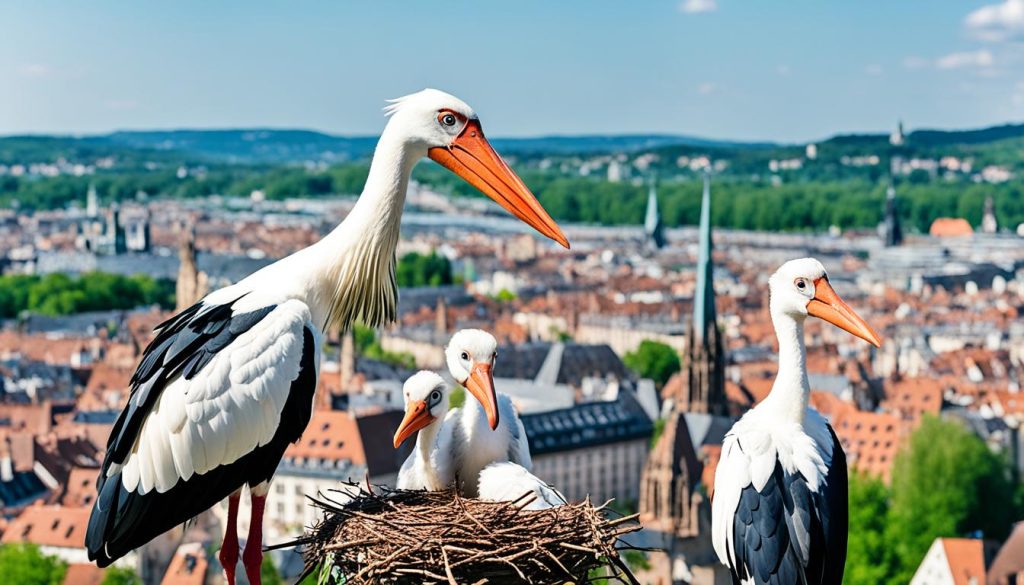
German-French Cultural Exchange
Strasbourg sits right on the border of France and Germany. This location has led to a deep German-French cultural exchange. Evidence of this mix is clear throughout the city. For instance, the Passerelle des Deux Rives stands tall. It’s a bridge made for people, linking Strasbourg to Kehl in Germany over the Rhine River.
This bridge gained even more significance in 2009. During a NATO summit, big names like Barack Obama and Angela Merkel walked across it. This support showed Strasbourg’s pivotal role in European unity. The Passerelle des Deux Rives was built in 2004. It serves as a powerful sign of the ongoing friendship and cooperation between France and Germany.
Alsatian Wine Route
Looking for more than just a bridge? Strasbourg offers a deep dive into Alsatian wine culture. The adventure starts with the Routes des Vins d’Alsace. This route is scenic and starts only 13 miles west in Marlenheim. It takes you through over 100 miles. Along the way, you’ll see vineyard-covered hills and lovely villages. You can also taste the famous Alsatian wines. This journey lets you truly experience the rich history and culture of the area.
Conclusion
Strasbourg mixes French and German influences into something truly special. It is a must-see place for anyone visiting the Alsace region. You can explore the medieval beauty of La Petite France or visit the famous Cathédrale Notre-Dame.
Walking down the cobblestone streets or enjoying the view from Barrage Vauban is a real treat. Don’t forget to taste the local Alsatian wines. Strasbourg will make a strong and good memory.
Strasbourg has earned the UNESCO World Heritage title. It works hard to protect its nature, even the storks love it here. As a guide to Strasbourg, it’s a blend of history, culture, and top sights that people really like.
Feel the unique vibes of Strasbourg, where French and German come together beautifully. This city is known for its ancient La Petite France and stunning Cathédrale Notre-Dame. It’s a place that stays with you, especially in the Alsace region.
FAQ
What is Strasbourg known for?
What are the top attractions in Strasbourg?
Can you take day trips from Strasbourg?
Does Strasbourg have a unique cuisine?
When is the best time to visit Strasbourg?
Is Strasbourg easy to navigate?
What is the Passerelle des Deux Rives?
The above is subject to change.
Check back often to TRAVEL.COM for the latest travel tips and deals.
Here are some Tours & Sightseeing suggestions that might pique your interests!
